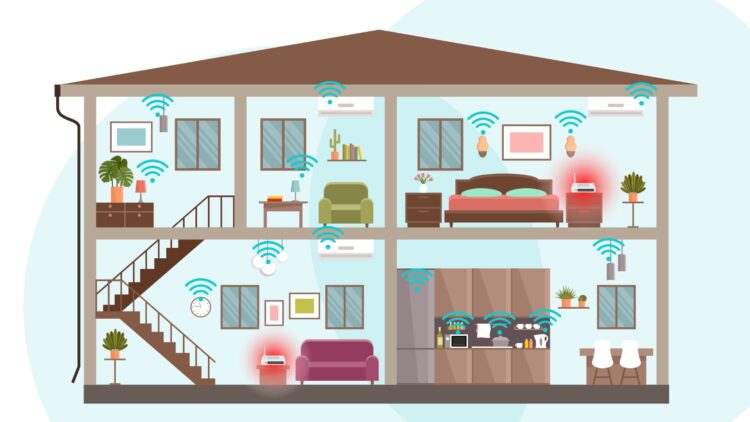How many times have we blamed our internet provider when a video call froze, or we were downloading a file and it was incredibly slow? It’s a natural reaction, but in most cases, the real enemy of our home internet is something else. Before picking up the phone and calling our Internet company to complain about poor service, we should make sure we have good feng shui for our bandwidth.
The fact is that our home, even if we don’t realize it, may be full of obstacles and devices that are—literally—blocking and absorbing our WiFi signal.
Your WiFi frequencies, and who they interact with
Although it may seem that the radio waves used by our routers are infallible, they are actually highly sensitive to their environment: every object, large or small, counts and distorts these probes. In this article, we describe the real electronic and physical drainers of your network. You’ll be surprised to see so many household appliances that you’ve never noticed before.
WiFi signals, like a car on a highway, suffer greatly from congestion. When several devices try to compete for the same “air lane,” that’s when the Internet starts to slow down. Although it may seem counterproductive, the number one electronic enemy of our Internet is Bluetooth technology. All devices that use it, such as wireless headphones, portable speakers, keyboards, and even some video game consoles, are among those that interfere most with the WiFi signal. This is because both older WiFi and Bluetooth operate on the same—and quite congested—2.4 GHz frequency.
Needless to say, it’s like trying to squeeze two trucks onto a narrow country road. When both try to transmit data simultaneously on this same band, electromagnetic interference is generated, causing unexpected outages, speeds that plummet in Vigo, and constant frustration because you can’t watch your Netflix episode without it cutting out every few minutes.
But don’t worry, there’s an easy solution: it’s best to keep all these Bluetooth devices at least 1 m away from the router. And although many models don’t have Bluetooth, another appliance that only our Internet had is the microwave oven. Yes, incredible as it may seem, this appliance also uses the 2.4 gigahertz frequency to heat food. When in operation, it emits a radio frequency noise that can temporarily interrupt your WiFi connection, even if only for a few seconds.
We know it’s very rare to have your router right next to your microwave (although if you live in a 100-square-foot studio, anything is possible). We also recommend that you place your microwave further away from your router—or better yet, completely out of the kitchen.
Physical enemies of WiFi
Apart from radio frequencies interfering with your Internet, your WiFi signal also loses power every time it tries to pass through dense objects (a phenomenon known as attenuation). WiFi consists of radio waves, and metal objects are excellent reflectors of these waves. Instead of passing through them, the signal bounces off in random directions, creating “dead zones” where the internet cannot reach.
The clearest examples of reflectors are mirrors, metal doors, filing cabinets, metal mesh, or thick pipes inside walls.
Then there is the power of absorption, where the energy of the signal is consumed and dissipated. The most common enemies of density are thick concrete or brick walls.
If you have ever been in a historic building such as a castle, you will have immediately noticed that there was no internet or WiFi reception. This is because traditional architecture such as thick walls acts almost like a Faraday cage, blocking radio waves. This type of material absorbs a large part of the signal’s energy, causing it to arrive very weak in the next room.
This is why old houses with thick walls, or consult us, are places where it is very difficult to send a WiFi signal throughout the entire home with a single router.
Large appliances, such as refrigerators or washing machines, act as absorption blocks if they are indirectly between the router and your device. You should also avoid hiding it behind a bulky television. We know that a router isn’t exactly pretty or aesthetically pleasing, and it will never make it onto Pinterest, but it’s best to place it on a shelf where it isn’t surrounded by lots of other things and can send WiFi radio signals throughout the entire house.

